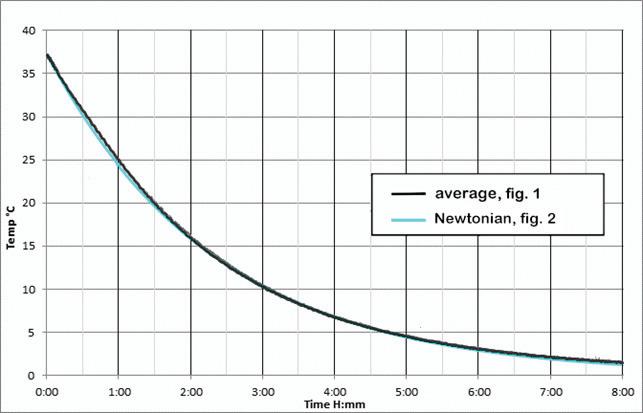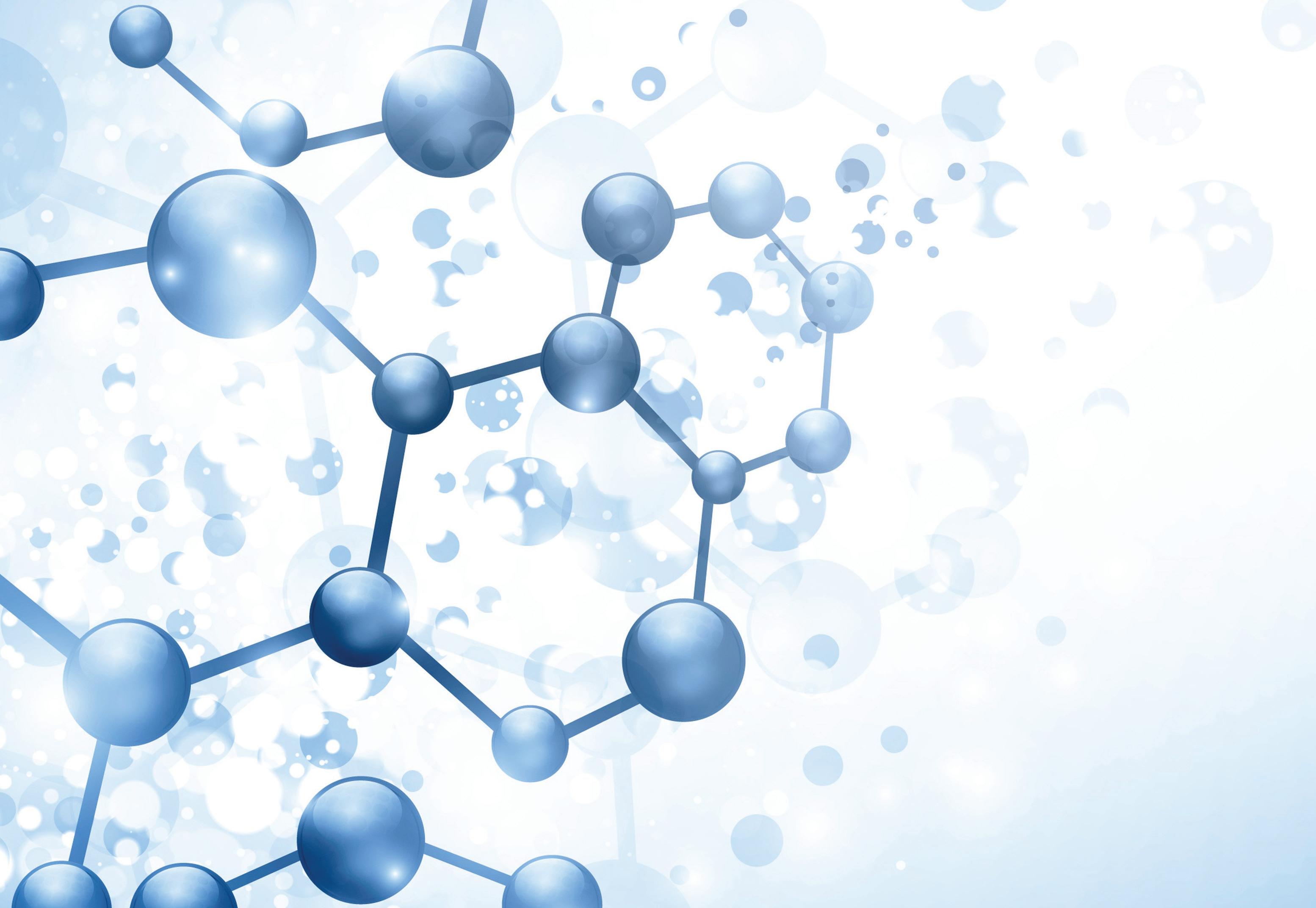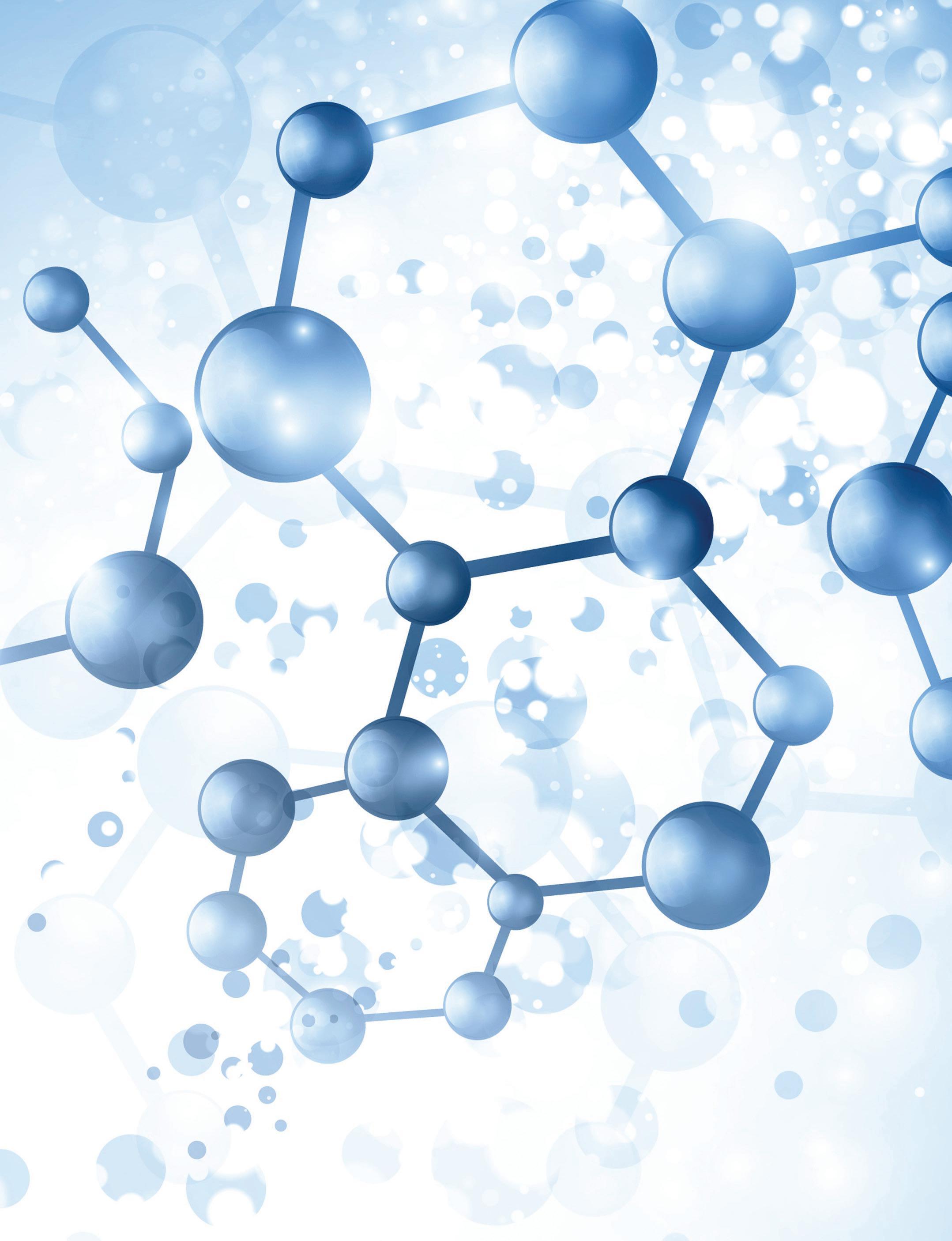11 minute read
Cephalon Cooling Curves, Practice and Theory: A Brief Progress Report Recent work at Oregon Cryonics with cadaver cephalons has furnished additional data on temperatures within the brain during various cooling protocols. Mathematical modeling of such processes can furnish useful insights into problems that might be encountered in the clinical (cryonics) setting, as well as serving as a low-cost, noninvasive adjunct and possible alternative to expensive and invasive laboratory procedures
Cephalon Cooling Curves, Practice and Theory:
A Brief Progress Report
By R. Michael Perry
Introduction
The initial stages of cryopreservation of a cryonics patient involve cooling from body temperature to the temperature of water ice (from approximately 37°C down to 0°C). Ideally, this cooling (and further cooling down to cryogenic temperatures, -100°C or lower) should happen as fast as possible to minimize damage from warm ischemia. Though the effects of warmer temperatures on tissue are complex, as a start in estimating or quantizing them we would like to know simply how the temperature varies as a function of time at different points within the cooling subject. Toward this end, temperatures are monitored using probes as cryopreservation proceeds, but opportunities are limited by the necessity of minimizing any possible harm to the patient while cryopreservation is in progress.
Recent work at Oregon Cryonics with cadaver cephalons has furnished additional data on temperatures within the brain during various cooling protocols. Mathematical modeling of such processes can furnish useful insights into problems that might be encountered in the clinical (cryonics) setting, as well as serving as a low-cost, noninvasive adjunct and possible alternative to expensive and invasive laboratory procedures. Here we compare experimental cephalon cooling curves as the temperature is reduced from body temperature (37°) to near 0° over an eight-hour period, with temperatures calculated from a spherical model of the human head, based on work of Art Quaife in the 1980s.2 The calculated cooling curves overall showed good, sometimes excellent, correspondence to the experimental curves, with some unexplained discrepancies perhaps pointing to deeper insight to be gained from further study.
Figure 1. Cephalon cooling data from Oregon Cryonics, used with kind permission.
Main Results
For the Oregon Cryonics results, cephalons starting at body temperature (37°) were immersed in an unstirred ice water bath, and temperatures were tracked as cooling proceeded toward water ice temperature (0°). Depths within the brain at which temperatures were monitored consisted of core (approximate brain center, 8 cm. downward from calvarium vertex, exterior top of skull), mid-range (5 cm. down) to surface of the brain, with nasopharyngeal and average temperature also plotted.1 (Further details, some involving other cooling protocols, will be found in the reference cited.) Results representing an average over 13 individual cases are shown in fig.1 for the different cooling curves. (Note: the curves for “Naso” and “Brain Surf” are nearly coincident.)
For the mathematical work, software was created in Mathematica for modeling heat flow in a sphere, based on the work of Art Quaife in the 1980s2, to approximate the cooling of an isolated cephalon. Quaife’s simplifying assumptions, adopted here, are that initially the sphere is at a temperature that is uniform throughout and that the surrounding medium is likewise at a uniform but lower, temperature. Further, the heat conductance is uniform and independent of temperature within the sphere, which does not generate heat but only loses it as cooling proceeds. Similarly, there is uniform, temperature-independent conductance out of the sphere into the surrounding medium.
With these assumptions, plots were obtained from calculations of cooling curves for the temperature at different points (radii r) within the sphere as a function of time t, ranging from core (r = 0) to surface (r = 1), plus an average temperature for the whole sphere. (Due to symmetry, the temperature within the sphere depends only on the radius r and time t.) The temperature range
compared to the rate of convection, so the temperatures within the object will be nearly uniform and the cooling will be nearly Newtonian, making the cooling curves nearly the same for different points within the sphere. The surrounding medium in turn will show significant temperature differences (temporary increases) with time. A large value of Bi reverses this condition, so that convection of heat out of the object creates large temperature differences within the object, but the surrounding medium will have small temperature differences only as the heat is rapidly transported away. An intermediate condition occurs with Bi=1 meaning the conduction and convection rates are equal.
The experimental results clearly show Figure 2. Cooling curves calculated from spherical model, substantial temperature differences, suggesting Biot number = 4, plus Newtonian. a large Bi (>1) would better account for them in the spherical model. Figure 2 shows calculated was scaled linearly to conform to the experimental range of 0°37°C. Time was similarly scaled so that the “time constant” for the average temperature to drop to 1/e of the temperature range of 37° down to 0°, or 13.6°C, would match the value seen in the experimental results. This in turn is found by considering the average (black) curve in Fig. 1; here the temperature of 13.6° is reached at about 2.35 hours. cooling curves at different radii r within the sphere, plus an average temperature, all with Bi = 4. In addition, for comparison a plot is included for the case Bi = 0, in which there are no temperature differences within the object (all radii show the same temperature) and the cooling is Newtonian: The cooling rate is proportional at all times to the difference between the temperature of the object and the final temperature, here 0°, resulting in an exponential decay. The calculated temperature depends additionally on the choice of the “Biot number” Bi giving the ratio of the rate of heat convection from the surface of the sphere to the surrounding medium, to the rate of heat conduction within the sphere. A small value of Bi corresponds to a high rate of heat conduction Figure 3. Comparison of experimental “average” curve, with calculated, “Newtonian” curve, showing near coincidence of the two curves.

Two of the calculated curves are especially close to the Newtonian curve: r = .75 and the average temperature. The Newtonian curve is also nearly identical to the experimentally derived average for the cephalon (Fig. 3). (The experimental average of the curves at different depths in the object, is not strictly comparable to the weighted average calculated curve shown in Fig. 2, where the weighting is proportional to r2. But the two curves both in fact fit the Newtonian curve fairly well, the experimental curve actually showing a better fit than the calculated curve.) The curve for r = .95 also matches well the brain surface and nasopharyngeal curves for the cephalon; note that the two experimental curves are not from the surface of the cephalon but a short distance inside.
It is only when the calculated curves for smaller r are compared with the experimental curves that significant discrepancies appear, the experimental temperatures appearing lower and more “Newtonian” than their calculated counterparts, if we identify the experimental “core” temperature with the calculated curve for r = 0, and the “mid” temperature with the

curve for r = .5. Instead, the calculation for r = .5 is a better match for the “core” experimental curve, and the calculation for r = .75 is similarly better for the “mid” experimental curve. The cause of these discrepancies is unclear – whether a simple matter of which probe position should be matched with which radius r, or something more substantial. But overall, the spherical model seems to capture the main features of cooling in the experimental case. One consequence is to lend confidence to the assumption that overall, the cephalon cooling is approximately Newtonian, at least for the protocol considered: The cephalon was immersed in ice and water, with ice added periodically and water from melting drained off, but there was no stirring of the bath. Further studies should provide additional insight for this and other cooling protocols, including addressing the question of how serious the slower cooling of the inner brain regions might be in terms of extra ischemic exposure.
References
1. 1. http://www.oregoncryo.com/researchCoolingRates. html, accessed 18 Jan. 2021. 2. 2. Art Quaife, “Heat Flow in the Cryonic Suspension of
Humans: A Survey of the General Theory,” Cryonics 6(9) (Sep. 1985) 9-30, ascii version at https://www.alcor.org/ docs/cryonics-magazine-1985-09.txt, accessed 3 Feb. 2021.
ORDER NOW! Preserving Minds, Saving Lives
The Best Cryonics Writings of The Alcor Life Extension Foundation
“Cryonics magazine introduced me to Alcor and cryonics at its best back in 1983. The visions and technological breakthroughs that you will read about in this book continue to shape Alcor’s mission to preserve life through science.” – Max More, Ph.D. President and CEO of Alcor, 2011-2020

Cryonics is an experimental medical procedure that uses ultra-low temperatures to put critically ill people into a state of metabolic arrest to give them access to medical advances of the future. Since its inception in the early 1960s, the practice of cryonics has moved from a theoretical concept to an evidence-based practice that uses emergency medical procedures and modern vitrification technologies to eliminate ice formation.

Preserving Minds, Saving Lives offers an ambitious collection of articles about cryonics and the Alcor Life Extension Foundation. From its humble beginnings in 1972, and its first human cryonics patient in 1976, Alcor has grown to a professional organization with more than 1,000 members, more than 150 human patients, and more than 60 pets, all awaiting a chance to be restored to good health and continue their lives.
This book presents some of the best cryonics writings from Cryonics magazine from 1981 to 2012. There are clear expositions of the rationale behind cryonics, its scientific validation, and the evolution of Alcor procedures. Also covered are repair and resuscitation scenarios, philosophical issues associated with cryonics, and debates within the cryonics community itself.
Soft Cover Edition: $20 – Hard Cover Edition: $35 To order your copy, go to: www.alcor.org/book Cryonics / 1st Quarter 2021 or call 1-877-GO ALCOR (462-5267)
WHAT IS CRYONICS?
Why We Are Cryonicists • Cryonics: Using Low Temperatures to Care for the Critically Ill • Medical Time Travel • The Bricks in the Wall HISTORY OF CRYONICS
John Hunter, Cryonics Forerunner • The Society for the Recovery of Persons Apparently Dead • Riding the Jameson Satellite • The First Cryonicist • Robert Ettinger: Some Brief Historical and Personal Notes • Notes on the First Human Freezing • The Realities of Patient Storage • Suspension Failures: Lessons from the Early Years • Dear Dr. Bedford • Robert Nelson and the Bedford Freezing: A Comment • Cold War: The Conflict Between Cryonicists and Cryobiologists HISTORY OF ALCOR
A Brief History of Alcor • Where did the name Alcor come from? • New Home, New Life: Alcor Moves to Arizona • The Alcor Patient Care Trust RESEARCH IN CRYONICS
Evaluation of the Condition of Dr. James H. Bedford after 24 Years of Cryonic Suspension • A Brief History of Alcor Research • The 21st Century Medicine Seminar: Amazing Breakthroughs in Cryobiology and Resuscitation Systems for Intermediate Temperature Storage for Fracture Reduction and Avoidance ALCOR PROCEDURES AND TECHNOLOGIES
How Cold is Cold Enough? • History of DMSO and Glycerol in Cryonics • Mathematical Analysis of Recirculating Perfusion Systems, with Application to Cryonic Suspension • Getting to 8M Glycerol and Other Perfusion Problems • How Cryoprotectants Work • Vitrification Arrives: New Technology Preserves Patients without Ice Damage • New Cryopreservation Technology • Cooling Down • Elements of a Transport • Cardiopulmonary Support in Cryonics: The Significance of Legal Death in Cryonics • Rapid Stabilization in Human Cryopreservation • Securing Viability of the Brain at Alcor • Case Reports in Cryonics RESCUSCITATION OF CRYONICS PATIENTS
To Wake Refreshed • The Anabolocyte: A Biological Approach to Repairing Cryoinjury • Cell Repair Technology • Realistic Scenario for Nanotechnological Repair of the Frozen Human Brain • A Cryopreservation Revival Scenario Using MNT • Neural Archaeology • Cryonics, Cryptography, and Maximum Likelihood Estimation • Information Storage and Computational Aspects of Repair PERSPECTIVES ON CRYONICS
A Message for Terminal Patients • The Death of Death in Cryonics • Why Suspension Members Need More Than Minimum Funding • Conservative Medicine • Binary Statutes, Analog World: Burke’s Paradox and the Law • Why a Religious Person Can Choose Cryonics • Cryonics and Emergency Medicine • Ethics of Non-ideal Cryonics Cases • Let’s Talk About Cryonics • How to Protect Your Cryonics Arrangements from Interference by Third Parties DEBATES WITHIN CRYONICS
But What Will the Neighbors Think? A Discourse on the History and Rationale of Neurosuspension • The Neurocryopreservation Option: Head First Into the Future • The Case for Whole Body Cryopreservation • Responsibility, Probability, and Durability • The “I” Word • The Road Less Traveled: Alternatives to Cryonics • The Myth of the Golden Scalpel • Has Cryonics Taken the Wrong Path?
Afterword • Biographies of Contributors

“Society’s failure to take cryonics seriously is a tragedy that is probably costing countless lives. Alcor, notably via its magazine, is leading the fight to change that.” – Aubrey de Grey, Ph.D. Biomedical Gerontologist and Chief Science Officer of the SENS Research Foundation “Alcor appears to be the leading organization in the application of cryonics in medicine. I’m proud to be a part of this effort.” – Michael D. West, Ph.D. Stem Cell Scientist and Chief Executive Officer of BioTime, Inc.

